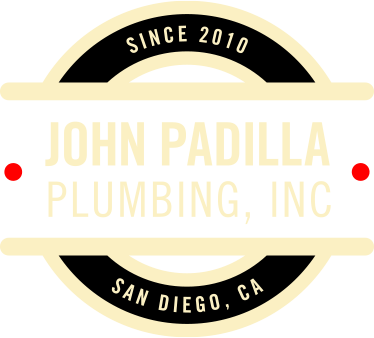Understanding the differences between Storage tank and tankless hot water heater’s can better provide you with the tools for choosing the best option for your home.
How a Tank Water Heater Works
A conventional tank style water heater stores the warm water that is ready for point of use, in the upper top half of the water heater unit. Most conventional tank style water heaters generally range in size from 30 to 100 gallons. The most common style/size of water heaters we replace in San Diego, typically consist of 40g tanks.
Whenever you turn on a hot water handle inside of your home, the heated water that is stored inside of the upper half of the unit is delivered to the fixture. In order to meet the increased demand of constant hot water usage, cold water is fed into the lower half of the water heater unit. Due to hot water demand being the most common necessity inside of one's home, the water heater unit is always heating and replenishing the cold water that is being forced into the water heater unit. Since San Diego has a hard water issue due to the lime and calcium deposits that are naturally inside of our potable water system, the water heater unit itself over time will begin to work harder to operate due to scale buildup. As hard water enters the unit, a chemical process begins to take place when heat is added. This addition of heat inside of the water heater unit results in the buildup of material known as “scale”. Over time as more scale is accumulated inside of the unit, the water heater will need to work twice as hard to deliver the same amount of potable hot water. Ultimately as the amount of scale builds inside of the water heater, so does the energy costs involved in order to operate the unit. A homeowner can better extend the life of their water heater, by annually draining the contents of the unit. This allows any excess buildup of scale inside of the water heater to be drained out.
How a Tankless Water Heater Works
Improvements in water heater technology has resulted in creating higher efficiency units for residential and commercial use. Powerful heating assemblies located on the internals of the unit, allows for cold water to be rapidly heated for point of use demand. Due to the fact that tankless water heaters only heat water entering the unit upon demand, energy costs are typically lower annually once the installation process has been completed. The addition of a tankless water heater unit, allows for continuous hot water usage through any fixture inside of the home. In order for the hot water that reaches each fixture to be “on demand”, the addition of a comfort system and/or a re-circulation pump will be required. Tankless water heaters deal with the accumulation of scale build up like storage water heater units, just not nearly as much. To properly maintenance a tankless water heater unit, an annulled-scaling solution is pumped throughout the unit. This allows for the tankless water heater to be thoroughly cleared of scale build up on the internals of the unit. Since water is only heated upon demand, the energy costs to run the tankless water heater unit over time are cheaper.
Cost Comparison
The cost differential between the two styles of water heaters can vary. Tankless water heater unit installations in San Diego can typically be more expensive during the initial installation process. However, as time progresses the savings per month will be drastically lower compared to a tank type unit. This is largely due to tank water heaters only having an average life span of roughly 6-10 years. Many of the tankless water heaters that John Padilla Plumbing provides in San Diego possess warranties that last on average 15-20 years. These are from industry leading companies such as Noritz and Rinnai. In conclusion although tankless water heaters may be more expensive initially, over time the amount of savings will increase.
Energy Efficiency
Tankless water heaters are for the most part more productive than customary tank water heaters. The U.S. Branch of Energy says that, contrasted with tank water radiators, tankless models are somewhere in the range of 24% and 34% more productive assuming you utilize under 41 gallons of heated water every day. Standard tank water heaters need to keep cold water entering the unit warmed constantly awaiting your homes demand for hot water. A tankless water heater unit heats the cold water entering the tank upon demand, resulting in lower energy costs.


